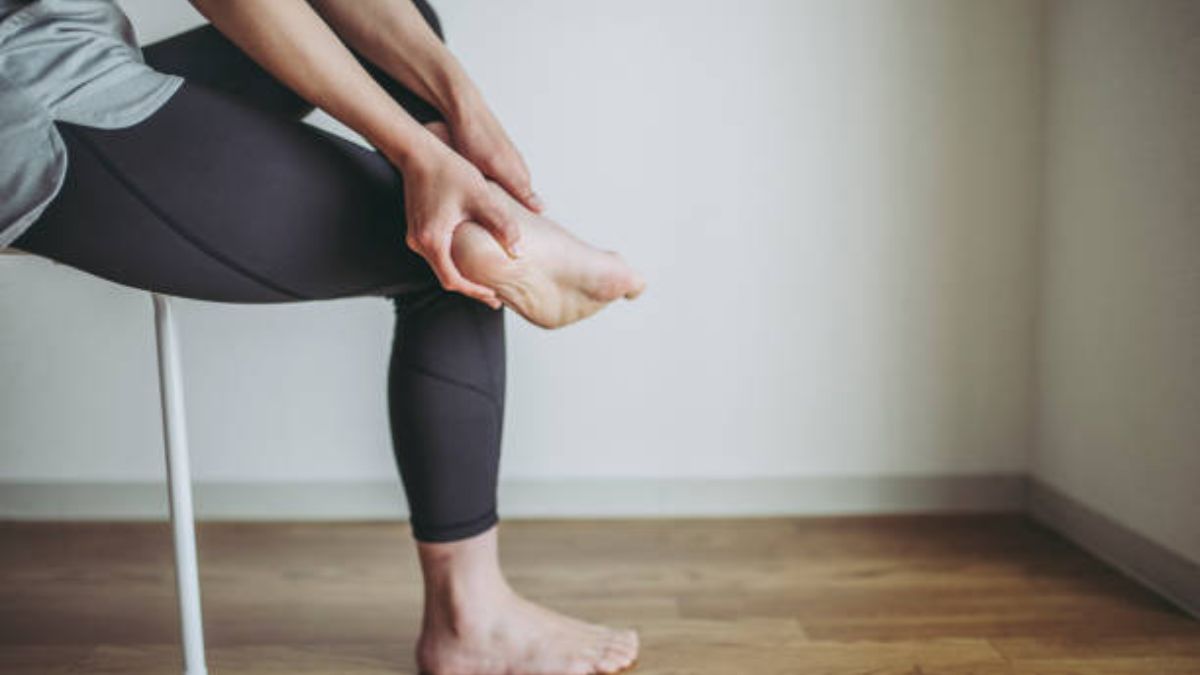Experiencing heel pain while walking may indicate underlying conditions such as plantar fasciitis, Achilles tendinitis, or heel bursitis. Haglund’s deformity often affects people who frequently wear high heels, while Sever’s disease is more common in active children. If left untreated, persistent heel pain can develop into long-term issues. Consulting a healthcare professional, wearing supportive footwear, and incorporating targeted exercises are essential steps toward effective relief and recovery.
Heel pain while walking is a vibe-killer. You’re out on your morning walk, breezing through the neighborhood, when boom sharp pain hits your heel. Or maybe your job keeps you on your feet, and now your heels feel like they’ve filed a complaint.Heel pain isn’t just an annoying side effect of a long day sometimes it’s your body waving a red flag. If you’ve ever wondered “why do my heels hurt,” the answer might be more than just tired feet. Let’s break down the most common (and sneaky) reasons behind foot pain while walking. Take a look.
Plantar Fasciitis
What is plantar fasciitis? If your heel pain hits you like a rude alarm clock first thing in the morning, you could be dealing with plantar fasciitis. It’s one of the most common heel pain medical conditions and involves inflammation in the tissue that connects your heel bone to your toes. That band of tissue — the plantar fascia — is working overtime.Plantar fasciitis symptoms include sharp pain near the bottom of the heel, especially with your first steps. Runners, people with flat feet or high arches, and anyone with a serious love for unsupportive shoes (yes, we’re looking at your flip-flops) are at risk.
What helps? Supportive footwear, heel pain remedies like stretching, orthotics, rest, and sometimes a chat with a foot health specialist. Your heels deserve better, friend.
Achilles Tendinitis
If the pain is chilling at the back of your heel, say hello to Achilles tendinitis. This is inflammation in the tendon that links your calf muscles to your heel bone. Usually, it shows up when you’ve suddenly gone full beast mode at the gym or decided to sprint without warming up.Back of heel pain from Achilles tendinitis feels stiff and sore, especially after a workout. Early Achilles tendinitis treatment includes rest, stretching, ice, and avoiding uphill runs (or that intense leg day).Ignore it, and it could get worse — we’re talking surgery worse. Not worth it.
Heel Bursitis
Your body has these tiny fluid-filled sacs called bursae that keep your joints cushioned. When they get inflamed, welcome to bursitis in heel. It’s usually caused by overuse, long walks on hard surfaces, or — you guessed it — terrible shoes.Heel bursitis brings swelling, tenderness, and a dull ache to the party. The fix? Anti-inflammatory meds, rest, and a switch to supportive footwear. In stubborn cases, you might need physical therapy with a foot health specialist.
Haglund’s Deformity
This one’s for the high heel fans. Haglund’s deformity causes include wearing stiff-backed heels (looking at you, stilettos and pumps) that put too much pressure on the back of your heel. Over time, a bony bump forms — classy name, painful reality.This common heel problem isn’t just about fashion. It causes pain, swelling, and that awkward feeling when even socks feel like torture. Heel lifts, soft shoe backs, and stretching can save your feet. And maybe swap the stilettos for sneakers once in a while?
Sever’s Disease
Kids aren’t immune to heel pain. Sever’s disease in children happens when their heel growth plate gets inflamed from sports, running, or too much jumping on the playground.You’ll notice them limping or complaining about heel pain after playing. Treatment is straightforward — rest, calf stretches, and making sure they’ve got cushioned, supportive shoes.If your kid’s into sports, keep an eye on those little heels — they work harder than you think.
Other underlying causes you might overlook
Sometimes, it’s not plantar fasciitis or tendinitis — it’s something sneakier. Think:
- Stress fractures in the heel from overuse
- Tarsal Tunnel Syndrome (a nerve pinch situation)
- Inflamed tendons or arthritis
Chronic heel pain is often overlooked until it becomes too severe to ignore. Instead of relying on internet searches for too long, it’s best to consult a foot specialist for an accurate diagnosis. Heel pain while walking isn’t something to shrug off—it might be your body’s way of saying it needs rest, better footwear, or medical attention. Conditions like plantar fasciitis, heel bursitis, or Achilles tendinitis all have treatments—you just need to pay attention to what your feet are telling you.
Supportive shoes, targeted stretches, rest, and even orthotic inserts can provide significant relief. So, the next time you feel a sharp pain in your heel or unexplained foot discomfort, don’t dismiss it. Addressing heel inflammation early can prevent prolonged suffering. Your feet carry you through life—give them the care they deserve, and maybe skip the stilettos for a day.




